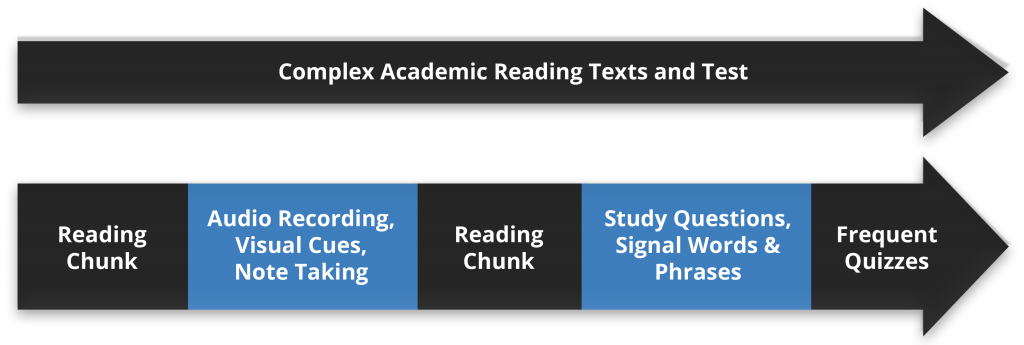The definition of close reading is “the disciplined reading and rereading of inherently complex and worthy texts.” Note that there are two underlying assumptions that characterize this definition:
- The texts are supposed to be both challenging and necessary
- The student must learn a read/study discipline in order to absorb them
Close Reading → Brief, Complex Texts
In other words, these texts are not beach reading for students; on the contrary, they fall decidedly outside the average student’s comfort zone. To really master the knowledge contained in the reading, one must exercise the disciplines of reading, re-reading, reflecting, asking oneself questions, prioritizing concepts, and considering the author’s intent and choices.
As such, the first rule of close reading is to keep the texts reasonably brief and concise, but also challenging. It would be a mistake to throw hundreds of pages of complex academic content at the students based on the theory that it is “good” for them, or because you consider yourself a “rigorous” professor. This misguided approach leads to the following:
|
Poor Reading |
Reading specialists call it “gist” or “one and done” reading, where the student barely scrapes the surface of the reading and retains very little of its content. |
|
No Reading |
Thirty percent of students either don’t buy the text or do buy it but “wing it” instead of reading the assigned texts. Another problem is that professors sometimes capitulate to the no-reading problem and simply test on the lecture material rather than on the assigned text. |
|
Search Reading |
Students use the professor’s study guide and the index of the text or search function on a digital text to look up the terms and “wing it” on the test. |
I have found that the brief, complex academic texts that I want students to close read are about 4,000-5,000 words of disciplined weekly reading, or about 12 pages per week. Overall, however, I want students to read closer to 30 pages per week, as this is also recommended by reading specialists. Because of this, I supplement the close reading with ease reading in the form of narrative books and papers at the general or popular reading level of grade levels 8-9. The combination of the academic text and two supplementary books or a collection of articles per semester has worked well for me. I also know that this meets the recommendations of reading specialists who suggest 150,000-200,000 words of assigned reading in the college classroom.
Close Reading → Brief, Complex Texts + Reading Chunking
Beyond the question of quantity, a disciplined reading strategy must also be established. The basic formula is this: the more your students struggle with academic reading, the more necessary it is to breakdown or “chunk” the reading material, and the more important it is to test your students with frequent quizzes. I believe that a 2,000-word chunked reading (5-6 pages) is the minimum that should be assigned to a college student. If you have a student who cannot sustain reading for 5-6 pages, even with support, they may be too far out of the range of college-level reading proficiency.

Close Reading → Brief Complex Texts + Reading Chunking + Scaffolding
Next, it is important to add what education experts call scaffolds, or techniques and support systems that help students develop their reading discipline. There are two kinds of reading scaffolds:
- Modality supports, or using the senses to facilitate reading (least-to-most-effective are audio, visual, and kinesthetic/note-taking)
- Internal discovery of the reading, or directing the student to see the structure of the writing with questions, as well as signal words and phrases
 Finally, you want to be sure that the frequent quizzes you are assigning contain questions that are detailed, conceptual, and inferential and which can be linked directly to the study questions and signal words and phrases. You may allow the quiz questions to be on the easier side in the beginning–however, you should make sure that you are not assessing answers on a study guide, but drawing from the actual assigned reading. This ensures that the students’ reading comprehension levels can be evaluated and improved.
Finally, you want to be sure that the frequent quizzes you are assigning contain questions that are detailed, conceptual, and inferential and which can be linked directly to the study questions and signal words and phrases. You may allow the quiz questions to be on the easier side in the beginning–however, you should make sure that you are not assessing answers on a study guide, but drawing from the actual assigned reading. This ensures that the students’ reading comprehension levels can be evaluated and improved.
